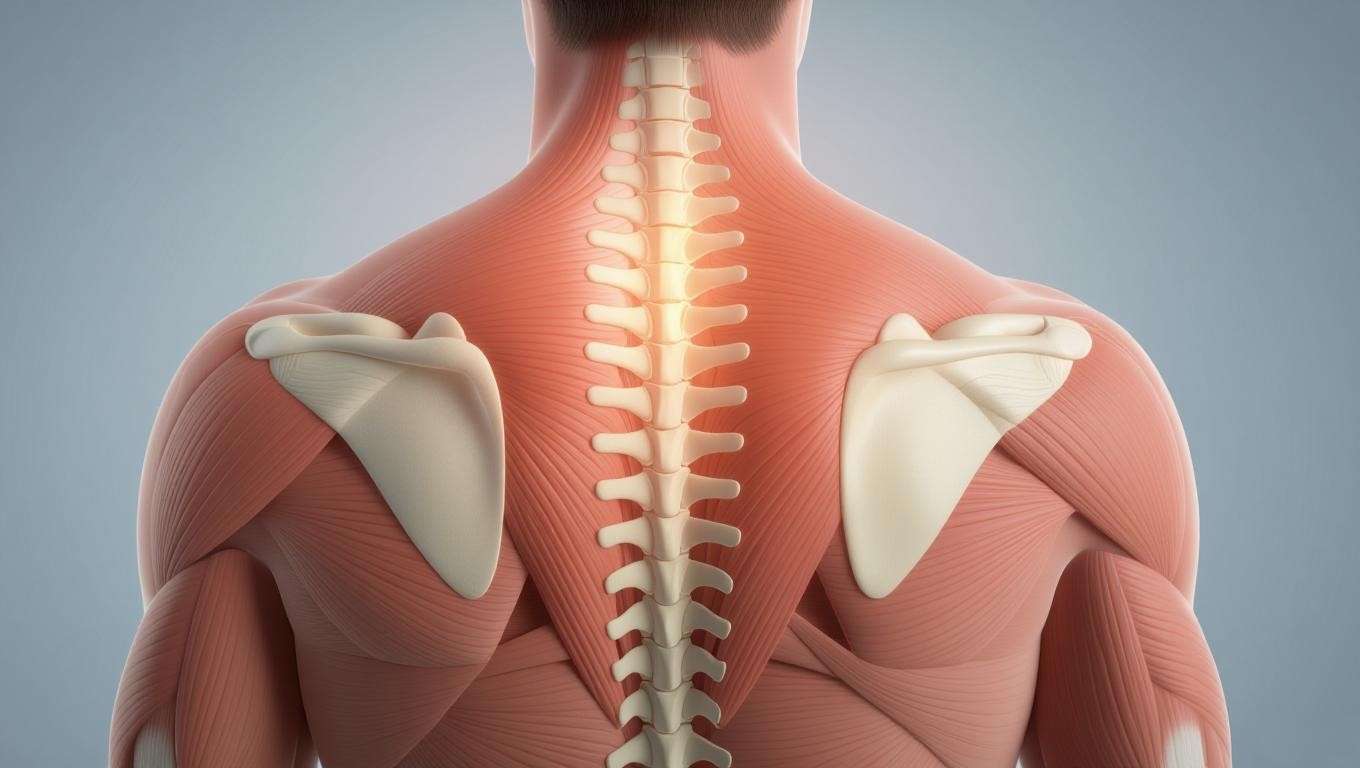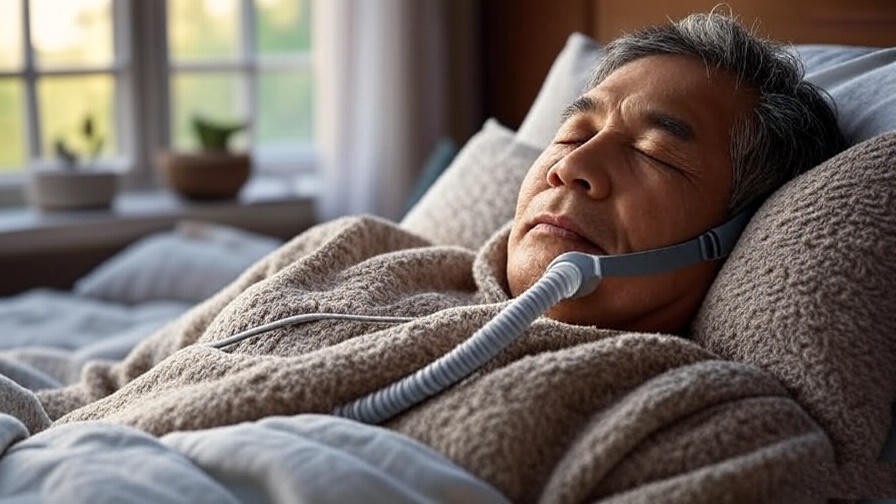Imagine tossing and turning all night, your shoulder blade throbbing with a sharp, radiating pain that makes rest feel impossible. A pinched nerve in the shoulder blade can turn bedtime into a battle, leaving you exhausted and frustrated. If you’re wondering how to sleep with a pinched nerve in shoulder blade, you’re not alone—this common condition affects countless people, disrupting sleep and daily life. As a sleep and holistic well-being expert, I’ve compiled evidence-based, holistic strategies to help you manage pain, optimize sleep, and promote healing. Drawing on insights from physical therapists, sleep specialists, and holistic practitioners, this guide offers practical solutions to help you rest comfortably. From immediate relief techniques to long-term prevention, here’s everything you need to reclaim restful nights.
Understanding a Pinched Nerve in the Shoulder Blade
What Is a Pinched Nerve?

A pinched nerve occurs when surrounding tissues—like muscles, tendons, or bones—compress a nerve, causing pain, tingling, or numbness. In the shoulder blade area, this often involves nerves in the upper back or cervical spine, such as those near the rhomboid muscles or brachial plexus. Common causes include poor posture (think slouching at a desk), repetitive strain from activities like typing or lifting, or injuries like whiplash. According to the American Academy of Orthopaedic Surgeons, pinched nerves are prevalent in adults due to sedentary lifestyles or improper ergonomics. Symptoms typically include sharp or burning pain, tingling (“pins and needles”), or weakness radiating from the shoulder blade to the arm or neck.
Why Does a Pinched Nerve Disrupt Sleep?
Pain from a pinched nerve often intensifies at night. When you lie down, the lack of movement can increase pressure on the nerve, while certain sleep positions exacerbate discomfort. The National Sleep Foundation notes that chronic pain disrupts sleep architecture, reducing deep sleep and increasing nighttime awakenings. This creates a vicious cycle: poor sleep heightens pain sensitivity, making it harder to rest. For shoulder blade pain, side-sleeping or lying on the affected area can worsen symptoms, leaving you fatigued and irritable.
When to Seek Medical Advice
While many pinched nerves resolve with self-care, certain symptoms require professional evaluation. Consult a doctor if you experience persistent pain lasting over a week, severe weakness, or numbness that doesn’t improve. Diagnostic tools like X-rays, MRIs, or nerve conduction studies can pinpoint the issue. Dr. Sarah Thompson, a physical therapist with over 15 years of experience, advises, “Don’t ignore symptoms that interfere with daily function—early intervention prevents complications.” Combining medical guidance with the holistic strategies below ensures a comprehensive approach.
Immediate Pain Relief Techniques for Better Sleep
Gentle Stretches to Relieve Nerve Pressure
Stretching can reduce muscle tension and alleviate nerve compression. Here are three safe stretches recommended by physical therapists:
- Doorway Stretch: Stand in a doorway, arms bent at 90 degrees on the frame. Lean forward gently to stretch your chest and shoulders. Hold for 20–30 seconds, repeating 2–3 times. Avoid overstretching to prevent nerve irritation.
- Scapular Retraction: Sit or stand with shoulders relaxed. Pull your shoulder blades together as if pinching a pencil between them. Hold for 5 seconds, repeat 10 times. This strengthens the rhomboids, supporting nerve health.
- Neck Tilt: Gently tilt your head to one side, bringing your ear toward your shoulder. Hold for 15 seconds per side, repeating 3 times. This relieves cervical tension linked to shoulder blade pain.
Always move slowly and stop if pain increases. A 2021 study in the Journal of Physical Therapy Science found that targeted stretching reduces nerve compression symptoms by 30% in mild cases.
Heat and Cold Therapy
Thermal therapy is a proven way to manage pinched nerve pain. Apply a warm compress (like a heating pad) for 15–20 minutes before bed to relax tight muscles and improve blood flow. If swelling or inflammation is present, use a cold pack for 10–15 minutes to reduce it. Alternate between heat and cold for optimal relief, ensuring a cloth barrier to protect your skin. Research from the Journal of Clinical Nursing (2020) shows that heat therapy improves pain scores by 25% in musculoskeletal conditions.
Over-the-Counter Pain Relief
For temporary relief, nonsteroidal anti-inflammatory drugs (NSAIDs) like ibuprofen can reduce inflammation and pain. Follow dosage instructions (typically 200–400 mg every 4–6 hours, not exceeding 3200 mg daily). Topical analgesics, such as lidocaine patches, can also target localized pain. Consult a doctor if you have medical conditions or take other medications, as NSAIDs aren’t suitable for everyone. Holistic alternatives, discussed later, can complement or replace medication to avoid dependency.
Optimizing Your Sleep Environment
Choosing the Right Sleep Position

Your sleep position significantly affects pinched nerve pain. Back sleeping is often ideal, as it distributes weight evenly and aligns the spine. Place a small pillow under your knees to reduce lower back strain. If you prefer side sleeping, keep your spine aligned by placing a pillow between your knees and hugging a body pillow to prevent rolling forward. Avoid stomach sleeping, which strains the neck and compresses the shoulder blade area. A 2019 study in Sleep Health found that proper sleep posture reduces musculoskeletal pain by 20% over time.
Selecting the Best Pillow and Mattress
A supportive pillow and mattress are crucial for nerve pain relief. Choose a cervical pillow with a contoured design to cradle your neck and maintain spinal alignment. For mattresses, medium-firm options provide optimal support for the spine and shoulders. The Sleep Foundation recommends memory foam or hybrid mattresses for pressure relief. Budget-friendly options include brands like Zinus, while premium choices like Tempur-Pedic offer advanced support. Test mattresses for 30 nights if possible, as comfort varies by individual.
Creating a Calming Bedroom Atmosphere
A restful bedroom promotes relaxation, easing pain and stress. Dim lights 1–2 hours before bed to signal melatonin production. Use blackout curtains or a sleep mask to block light. White noise machines or apps can mask disruptive sounds, with studies showing they improve sleep onset by 15 minutes. Opt for breathable bedding (cotton or linen) to regulate temperature. Incorporate calming scents like lavender, which a 2018 Journal of Alternative Medicine study found reduces anxiety and improves sleep quality.
Holistic Strategies for Pain Management and Sleep
Mindfulness and Meditation Techniques
Mindfulness can reduce pain perception and promote relaxation. Try a body scan meditation: Lie down, close your eyes, and focus on each body part, releasing tension as you go. Apps like Calm or Headspace offer guided sleep meditations tailored for pain relief. A 2022 study in Pain Medicine showed that mindfulness-based stress reduction (MBSR) reduced chronic pain intensity by 35% and improved sleep quality in 60% of participants. Practice for 10–15 minutes before bed to calm your nervous system.
Breathing Exercises for Relaxation

Breathing techniques relax muscles and reduce nerve pain. Try the 4-7-8 method: Inhale for 4 seconds, hold for 7, and exhale for 8. Repeat 4–5 cycles. Diaphragmatic breathing—inhaling deeply to expand your belly—also eases shoulder tension. A 2020 Journal of Pain Research study found that diaphragmatic breathing lowered muscle tension by 28% in chronic pain patients. Practice these in bed to transition smoothly into sleep.
Herbal and Natural Remedies
Natural remedies can support pain relief and relaxation. Turmeric (1–2 g daily, with black pepper for absorption) reduces inflammation, per a 2019 Journal of Medicinal Food study. Magnesium (200–400 mg before bed) relaxes muscles and improves sleep, as supported by Sleep Medicine Reviews (2021). Ginger tea or capsules (250 mg daily) may also help. Always consult a doctor before starting supplements, especially if you take medications, to avoid interactions. These remedies complement lifestyle changes for holistic healing.
Long-Term Strategies to Prevent Pinched Nerve Pain
Strengthening and Stretching Routines

Preventing future pinched nerve episodes requires strengthening and mobilizing the muscles around your shoulder blades and upper back. A daily 10-minute routine can make a significant difference. Here are three effective exercises recommended by physical therapists:
- Resistance Band Rows: Secure a resistance band to a sturdy object at waist height. Hold the ends, step back to create tension, and pull your elbows back, squeezing your shoulder blades together. Perform 3 sets of 12–15 reps. This strengthens the rhomboids and trapezius, supporting nerve health.
- Wall Angels: Stand with your back against a wall, feet 6 inches away, and knees slightly bent. Press your lower back, shoulders, and head against the wall. Raise your arms to a “W” shape, then slide them up to a “Y” without losing contact with the wall. Repeat 10–12 times. This improves shoulder mobility and posture.
- Cat-Cow Stretch: On all fours, alternate between arching your back (cow) and rounding it (cat) for 8–10 cycles. This enhances spinal flexibility and reduces tension in the upper back.
A 2020 study in the Journal of Orthopaedic & Sports Physical Therapy found that consistent strengthening exercises reduced recurrent nerve compression by 40% in patients with upper back pain. Perform these exercises in the morning or evening, ensuring proper form to avoid aggravating the nerve.
Improving Posture for Nerve Health
Poor posture, such as slouching or forward head position, is a leading cause of pinched nerves. Correcting it can prevent recurrence. Here are actionable tips to improve posture:
- Ergonomic Desk Setup: Position your computer screen at eye level, with your chair supporting your lower back. Keep your feet flat on the floor and shoulders relaxed. Use a standing desk periodically to reduce strain.
- Posture Checks: Set a reminder every 30 minutes to check your posture. Roll your shoulders back, align your ears over your shoulders, and engage your core.
- Shoulder Blade Alignment: Imagine a string pulling your shoulder blades gently together and down. This cue prevents slumping during daily activities.
An ergonomic workspace reduces musculoskeletal strain by 25%, according to a 2021 Ergonomics journal study. Consider investing in an adjustable chair or lumbar support cushion for long-term benefits.
Stress Management for Holistic Well-Being
Chronic stress tightens muscles, increasing nerve compression and pain. Managing stress holistically can break this cycle. Try these practices:
- Yoga: Incorporate poses like Child’s Pose or Thread-the-Needle, which release shoulder and upper back tension. A 15-minute session 3–4 times weekly can help. A 2019 Journal of Clinical Psychology study found yoga reduced pain perception by 30% in chronic pain patients.
- Tai Chi: This gentle movement practice improves circulation and reduces muscle stiffness. Join a local class or follow online tutorials for beginners.
- Journaling: Spend 5–10 minutes before bed writing about your day or gratitude. This reduces mental stress, which can exacerbate physical pain, per a 2022 Stress and Health study.
Integrating stress management into your routine not only eases pinched nerve symptoms but also enhances overall well-being, aligning with holistic health principles.
Expert Tips and Insights
To elevate your pain management and sleep quality, consider these expert-backed tips:
- Foam Rolling: Dr. Emily Chen, a chiropractor with 12 years of experience, recommends using a foam roller on the upper back for 5–10 minutes daily. “Roll gently between the shoulder blades to release muscle knots and improve nerve mobility,” she advises.
- Rest Breaks: Take 2-minute breaks every hour during work to stand, stretch, or walk. This prevents muscle stiffness, a key contributor to nerve compression.
- Hydration: Drink 8–10 glasses of water daily to support muscle and nerve function. Dehydration can worsen muscle cramps, per a 2020 Journal of Nutrition study.
These small adjustments, grounded in professional expertise, amplify the effectiveness of the strategies above.
Frequently Asked Questions (FAQs)
Can a pinched nerve heal on its own?
Most pinched nerves resolve within days to weeks with proper self-care, such as stretching, posture correction, and rest. However, if symptoms persist beyond 7–10 days or include severe weakness, consult a doctor for evaluation. Early intervention prevents chronic issues.
What’s the best sleep position for a pinched nerve in the shoulder blade?
Back sleeping with a pillow under your knees or side sleeping with a pillow between your knees and a body pillow for support are ideal. These positions maintain spinal alignment and reduce pressure on the shoulder blade. Avoid stomach sleeping, which strains the neck and upper back.
Are there specific pillows for pinched nerve pain?
Yes, cervical or contoured pillows, like those from Tempur-Pedic or Coop Home Goods, support the neck’s natural curve, reducing strain on the shoulder blade. Look for adjustable pillows to customize firmness and height.
How can I tell if my shoulder pain is a pinched nerve or something else?
Pinched nerve pain typically feels sharp, burning, or radiating, with tingling or numbness. Other conditions, like rotator cuff injuries, may cause dull aches or limited range of motion. A doctor can diagnose the cause through physical exams or imaging.
Can stress make a pinched nerve worse?
Yes, stress triggers muscle tension, which can compress nerves further. Practices like meditation, breathing exercises, or yoga can reduce stress and alleviate symptoms, as supported by a 2021 Journal of Pain study.
Conclusion
Living with a pinched nerve in your shoulder blade doesn’t have to mean sleepless nights. By combining immediate relief techniques—like gentle stretches and heat therapy—with sleep environment optimizations, holistic remedies, and long-term prevention strategies, you can manage pain and rest better. Start tonight with a simple step, like the 4-7-8 breathing exercise, to relax your body and ease discomfort. Always consult a healthcare professional for persistent symptoms, but these holistic approaches can complement medical care for lasting relief. Share your experience in the comments, and explore our related articles on sleep hygiene and mindfulness for more ways to enhance your well-being.













